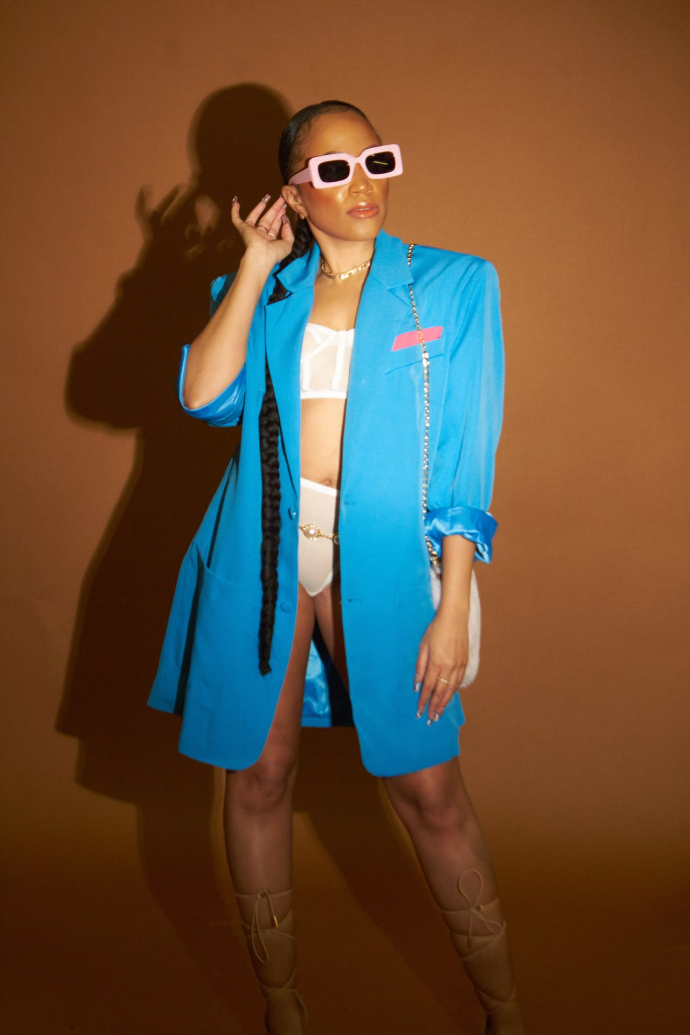Pricing Your Creative Work With Confidence
As a creative, you hold a special power. Whether you’re a painter, designer, photographer, writer, or any kind of artist, you bring ideas to life. Your work inspires, connects, and brings joy. Yet, when it’s time to set a price for your services or creations, you may feel uncertain or undervalued.
This creative pricing guide will remind you of your creative work's worth. It will help you feel confident in your pricing. It will also teach you how to price art that shows the value of your work.
1. Understand the Value of Creativity
Your creativity is a superpower. When people come to you, they’re looking for something only you can provide. But it’s not just about the final product; it’s about the process behind it:
Experience: Every stroke, pixel, or word reflects years of practice. Your client isn’t just paying for the hours spent on their project—they’re paying for the expertise you’ve developed over time.
Originality: Your unique vision gives life to their ideas. No two creatives are the same, and that makes your work special.
Impact: Your art doesn’t just exist; it resonates. A logo can define a brand. A mural can transform a space. A well-designed flyer can bring in hundreds of customers.
Remember: If they could do it themselves, they wouldn’t be coming to you.
2. Cover Your Costs (and Then Some)
Pricing starts with knowing your costs. Steps to price art for profit:
Direct Costs: These are the materials you use, like paints, canvases, software, or tools.
Time Investment: Calculate the hours you’ll spend on the project, including prep work, brainstorming, revisions, and final touches.
Overhead: Don’t forget studio rent, electricity, internet, or subscriptions. Even small costs add up over time.
Profit: This is the part many creatives forget. You’re not just working to break even—you’re building a sustainable career. Profit ensures you can invest in better tools, education, and growth.
Let’s say your project costs $50 in materials, and you spend 10 hours on it. If you value your time at $15 per hour, the total is $200. Now, add a profit margin. A reasonable price might be $250.
3. Your Expertise Deserves Premium Pricing
Have you ever heard the saying, “You’re not paying for the 10 minutes it takes me to do this—you’re paying for the 10 years it took me to learn how”? This statement perfectly captures the essence of valuing your expertise when setting your prices.
Clients aren’t just paying for the time you spend on a project; they’re investing in:
Your ability to deliver higher quality results. Years of experience have refined your skills, ensuring you can produce outcomes that meet or exceed expectations.
Your expertise in solving problems. You’ve honed your ability to identify challenges and provide effective, timely solutions that save clients from potential pitfalls.
Your ability to avoid mistakes and deliver reliably. Your knowledge and precision minimize risks, ensuring a smoother process and more dependable results.
If you have spent years building your skills or have taken special training, your prices should show your value. Your clients gain from the time you spend and your deep experience. They also feel more confident working with a skilled professional. Remember, your skills are an asset—price them accordingly!

Ready to bring your visuals to life?
Schedule a meeting to discuss your vision.
4. Market Research
Knowing what other business owners in your industry charge can give you helpful information. This can help you set your rates confidently.
Researching industry pricing helps you position your services competitively. It also shows the value you offer to potential clients. Here are a few ways to gather useful data:
Freelancers or agencies offering similar services: Look into individuals or companies who offer comparable work in your field. Look at their pricing, packages, and the value they offer. This will help you understand what clients pay for services like yours.
Pricing benchmarks in your niche: Investigate typical rates for specific services in your industry. Such as photography sessions, logo design, commissioned art, consulting hours, or other specialized work. These benchmarks can serve as a guide to help you align with industry standards.
Regional differences: Keep in mind that pricing often varies based on location and market demand. For example, big cities or areas that need your skills may offer higher rates. In contrast, smaller markets may have lower prices.
Remember, you don’t have to copy someone else’s pricing exactly. Instead, use this research as a framework to assess where you fit in the market. Consider your experience, skill level, and the unique value you offer when setting your rates. Competitive positioning is about balancing fairness with confidence in the worth of your work.
5. The Fear of Charging “Too Much”
Many creatives worry about scaring off clients with high prices. The truth is clients who value quality are willing to pay for it. If someone thinks your rates are too high, they may not be the right client for you.
Instead of lowering your prices to fit everyone’s budget, focus on attracting the right audience. High rates often signal confidence and professionalism, which appeals to serious buyers.
6. Offer Flexible Options
If you worry about losing clients due to pricing, think about offering tiered creative pricing packages. This can give flexibility and meet various budget needs. For instance:
Basic Package: $100 – Covers essential services, ideal for those looking for a straightforward, no-frills option.
Standard Package: $300 – Includes additional features that offer more value and convenience for clients seeking an enhanced experience.
Premium Package: $500+ – This is a fully customized option for clients who want the best service. The design targets those who are willing to invest in a complete solution.
This tiered approach allows you to cater to a broader range of clients while maintaining the value of your work. It helps clients choose the package that best fits their needs and budget, ensuring they don’t feel forced to undervalue your services.
7. Communicate Your Value Effectively
Sometimes, clients need help understanding the cost of artistic services. Be ready to explain the value behind your rates.
Instead of saying, “This costs $300,” you can say, “This package offers a custom design for your brand. It includes several revisions to make sure you are happy. You will get a final product that works well for both web and print.”
Break it down so they see the thought, effort, and expertise you bring to the table.

Ready to bring your visuals to life?
Schedule a meeting to discuss your vision.
8. Beware of “Exposure” Offers
Many creatives are asked to work for free in exchange for “exposure.” While this might make sense at the very start of your career, it’s not sustainable. Exposure doesn’t pay bills, and it often undervalues your work.
If someone truly values your skills, they’ll find a way to compensate you. It’s okay to say no to unpaid projects unless they align perfectly with your goals or offer genuine long-term value.
9. Learn to Handle Negotiations
It’s natural for clients to ask about discounts. Instead of cutting your prices, offer alternatives:
A smaller scope of work for their budget.
Payment plans to make larger projects more manageable.
Bundled services at a slightly lower rate for bulk orders.
This keeps your value intact while showing flexibility.
10. Evolve and Review Your Pricing
As you grow in skill and demand, your rates should grow too. Revisit your pricing every 6-12 months and adjust based on:
New skills or certifications you’ve gained.
An increase in demand for your work.
Inflation and rising costs of materials.
It’s a sign of success when your prices reflect your growing expertise.
You Are Worth It
Every creative struggles with pricing at some point, but the key is to remember this: Your work has value because it’s yours. By charging what you’re worth, you’re not just supporting yourself—you’re helping the world see the value of creativity.
So, stand tall, price with confidence, and let your creativity shine. The right clients will recognize your talent and gladly pay for it.
Watch YouTube video
You Are Worth It!
Pricing Your Creative Work With Confidence